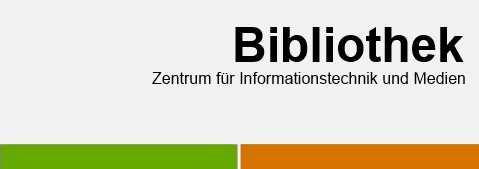Filtern
Dokumenttyp
Purpose
Although the systemic approach to the leadership concept seems to fit well into our modern complex and dynamic work environment, only little research has been conducted to define and assess systemic leadership. In this study we therefore developed and assessed criterion validity of the
multidimensional systemic leadership inventory (SLI, Sülzenbrück & Externbrink, 2017).
Methodology
We conducted two cross-sectional survey among managers and employees of various organizations (N = 143 and N = 150).
Results
We found a robust five-factor structure of the SLI, comprising systemic thinking, self-knowledge, solution-oriented communication, creating meaning and delegation. Regarding criterion validity, a significant positive correlation of systemic leadership was found with affective commitment, while a significant negative correlation with emotional strain in occupational contexts occurred. These overall positive outcomes for employees were not undermined by negative personality traits of the employee (Machiavellianism), while strong growth need strength further enhanced positive effects on affective commitment.
Limitations
Since all variables were measured as self-reports, common method variance could limit our findings.
Practical Implications
Systemic leadership is a very promising new approach for leaders to ensure committed and less strained employees.
Value
Systemic leadership, especially in terms of a leaders’ understanding of organizational and private systems influencing work behaviour of all members of an organization, is a promising novel leadership model suitable to address challenges of complex and dynamic work environments.
Eine der ersten Informationen, die man von seinem Gegenüber wahrnehmen kann, ist meist das äußere Erscheinungsbild. Wird dies als attraktiv bewertet, wirkt es sich in vielen Lebensbereichen, wie auch im beruflichen Umfeld, vorteilhaft aus (Willis & Todorov, 2006; Marlowe et al., 1996; Langlois et al., 2000; Frieze et al., 1991). Im Rahmen der Bachelor-Thesis wurde der Einfluss physischer Attraktivität in Bezug
auf das Fehlverhalten von Mitarbeitenden in Form einer Vignettenstudie untersucht. Es wurden die folgenden Forschungsfragen formuliert: Werden attraktive Mitarbeitende trotz eines gezeigten Fehlverhaltens als vertrauenswürdiger eingeschätzt als unattraktive Mitarbeitende? Wird eine Bestrafung in Form einer Abmahnung und einer Kündigung bei unattraktiven Mitarbeitenden für angemessener gehalten als bei attraktiven Mitarbeitenden? Es wurde vermutet, dass sich auch hier die physische Attraktivität positiv auswirken kann.
Die postulierten Hypothesen wurden mit einem Stichprobenumfang von N = 679 im Between-Subjects Design eines Online-Experiments untersucht. Insgesamt gab es vier Vignetten, die sich in der Attraktivität einer dargestellten Mitarbeiterin und der Art des kontraproduktiven Arbeitsverhaltens unterschieden. Die Datenanalyse zeigte eine signifikante Interaktion zwischen der physischen Attraktivität und der Art des kontraproduktiven Arbeitsverhaltens auf, F(1,675) = 4.02, p = .046, η² = .01. Im Falle eines interpersonal schädigenden Arbeitsverhaltens wurde eine Kündigung bei der attraktiven Mitarbeiterin als angemessener bewertet. Im Falle eines organisationalschädigenden Arbeitsverhaltens hingegen wurde eine Kündigung bei der unattraktiven Mitarbeiterin als angemessener bewertet. Aus diesen Forschungsergebnissen wurden praktische Implikationen, wie zum Beispiel die Sensibilisierung für derartige Einflüsse durch Schulungen, abgeleitet. Auch Ansätze für zukünftige Forschungen, wie die Variation im Geschlecht der Stimulusperson, wurden vorgeschlagen.
Theoretischer Hintergrund: In der psychologischen Führungsforschung zeigt sich ein Shift von traditionellem Management hin zu progressiveren Führungsmodellen, in denen das Gemeinwohl und die nachhaltige Führung von Mitarbeitenden anstelle des Selbstinteresses von Führungskräften treten.
Diese Modelle bewegen sich allerdings weiter im traditionellen Paradigma, dass effektive Führung komplexe Systeme gezielt beeinflussen und auf erwünschte Zielzustände hin ausrichten kann.
Fragestellung: Folgt man dem systemischen Ansatz, so können Führungskräfte das organisationale System nicht beeinflussen, sondern lediglich die Relationen seiner Bestandteile und Rahmenbedingungen für Emergenz schaffen. So lässt es sich beispielsweise aus der Theorie komplexer adaptiver Systeme und dem darauf basierenden Complexity Leadership Ansatz ableiten. Wenngleich viele Wissenschaftler*innen hierin Potential effektiver Führung sehen, mangelt es doch an konzeptionellen und psychometrischen Grundlagen sowie empirischer Evidenz für die Effektivität systemischer Führung.
Methodik: Wir stellen einen Fremdbeschreibungsfragebogen zur Messung systemischer Führung vor (N ges = 8770) sowie die mit diesem Instrument gewonnenen Ergebnisse verschiedener Feldstudien (k = 28) zu Antezedenzien, Auswirkungen und Randbedingungen systemischer Führung. Wir berücksichtigen auch die inkrementelle Varianzaufklärung über transformationale Führung.
Ergebnisse: Das Systemic Leadership Inventory ermöglicht die Einschätzung systemischer Kompetenzen
von Führungskräften.
Diskussion: Zukünftige Forschung sollte sich mit der Entwickelbarkeit systemischer Führung beschäftigen. Limitationen unseres Forschungsprojekts werden diskutiert.


